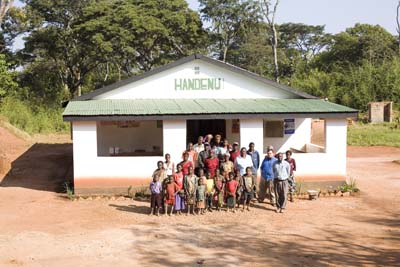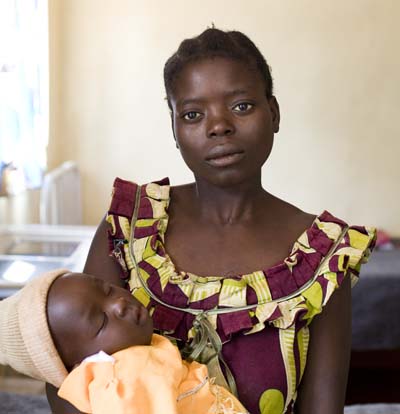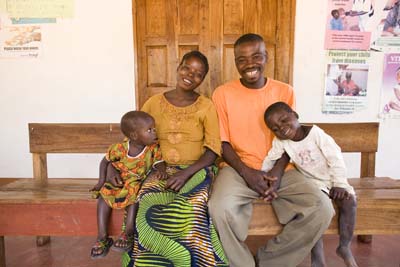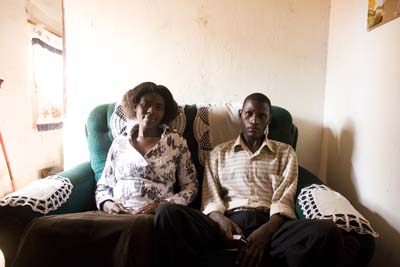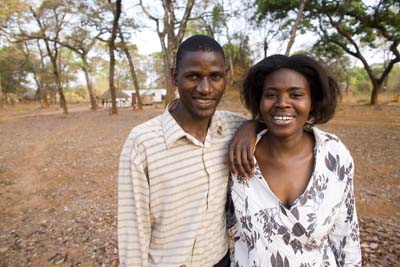Mibila Village Clinic, an update
Mibila Village Clinic. The word ‘Handenu’ painted on the front means ‘be healed.’
Three years ago, advice I became involved with a project to provide primary healthcare in a remote region of Zambia, approved in southern Africa.
Jon Witt and Barry Ilunga. Their vision made the clinic a reality.
My friends Jon Witt and Bishop Barry Ilunga decided to build a clinic at the end of an 18 kilometer track (which itself is 30 kilometers from the nearest town).
It is 18 kilometers from Mibila to the main road. Before the clinic was built, information pills this distance and terrain meant that an extreme medical emergency would almost always be fatal.
A team of volunteers from the UK spent six weeks deep in the bush, toiling with the local villagers building the clinic brick-by-brick.
A garage sale at my parents house – which raised £200 for the clinic
The tough part about fund-raising for projects like Mibila Village Clinic is that its easy to get people excited about funding its construction – but then the un-glamorous part starts – which is financing its day-to-day operations.
However, since the clinic opened in November 2006, you – my friends and family – have donated 20% of the clinic’s running costs.
That’s right, 20%!
The clinic costs £12,000 a year to run and currently has 4,000 registered patients. (The actual number of people served by the clinic is far greater, because while a mother and child may be registered, the father and older children may not have had reason to visit yet.)
Therefore, it is costing about £3 per patient to run the clinic.
A donation from you will provide primary healthcare for families like Moses and Helen’s.
This means a donation of £25 from you will provide healthcare for one family for a year.
The reason why we’re able to provide a comprehensive primary healthcare service for such a small cost is:
1. The clinic is served by a team of volunteer healthworkers – who all live in or near Mibila
2. A further team of volunteers is being trained and supervised by the clinic – for example, teaching some of the mature ladies to be birthing attendants.
3. The clinic has developed close ties with the local Zambian Health board who now supply a proportion of the clinic’s medicine/supplies
4. A team of UK volunteers source unwanted medical supplies in the UK and send them to Zambia
All the above means that every penny donated via my Justgiving website is spent directly on the clinic.
Statistically speaking, without any primary health-care, two of these children will die before they are adults
The most vulnerable and those most in need of primary healthcare are the mothers, new-borns and children. Zambia has one of the lowest life-expectancies in the world at 37. This is due to the extremely high infant mortality rate.
Gertrude with Freda, the first baby born in the clinic in 2006
This is Freda, the first baby to be born at the clinic. Her mother and father are Gertrude and Stanley. Freda’s older sister died before the clinic was built. She became sick, and her ailments baffled the local Witch Doctor. An all too common story in rural Africa… but Freda has had a completely different start to life.
Gertrude, Stanley and family in April 2007
During her pregnancy, Gertrude’s health was closely monitored by the clinic. She gave birth in safe, comfortable surroundings and Freda was delivered by an expert nurse. Since then Freda has been given immmunisations, regular health checks and sleeps under a mosquito net provided by the clinic.
These are all very basic, and very low-cost measures that are transforming the life expectancy in Mibila village and the surrounding areas.
Gertrude, Stanley and their family in 2008. Gertrude is expecting another child before Christmas
The very first day I arrived in Zambia in 2006 I met and made friends with Sunday and Exhilda.
Sunday and Exhilda on the land they cultivate. A job harder than normal, as they both also volunteer for three days a week at the clinic
Sunday and Exhilda are two of the volunteer health workers at Mibila Clinic. Three days a week they bicycle 7 kilometers from their village of Milulu to work at the clinic.
When I arrived at their house this year there was a moment of complete joy as Sunday and Exhilda showed-off their first Grandson, Alan. This moment didn’t last long. Alan’s mother Losah (their eldest daughter), was being nursed under a tree by her sister Sarah.
Seeing me, Losah determinedly dragged herself to her feet, and joined the rest of the family to be photographed inside their home. Picture taken, she lay back down again and Sunday explained that Losah had HIV/Aids.
Sunday, Exhilda, Richard, Losah and Alan, and Sarah. Losah has HIV AIDS.
Losah’s experience is illustrative of the AIDS pandemic sweeping Africa. It is something we all know about, but when it’s happening in front of your own eyes, it takes on a whole new significance and urgency. The added tragedy is that AIDS attacks the young and the healthy – the people who have survived all the childhood illnesses that take such a high toll.
A crucial role that Mibila Village Clinic is taking is in health education, specifically AIDS awareness. Again, these can be very low-cost activities. For example, the health workers often organise football matches – and then do AIDS awareness talks afterwards.
Nurse George and Mercy
Key to the success of Mibila Village Clinic is Nurse George. He moved to the village with his wife Mercy earlier this year and my first impression was that George is obviously a competent and devoted man – and that when I met him he was also utterly exhausted. It transpired that he had spent a whole night and day with a pregnant mother. It wasn’t even a patient from the clinic, but someone visiting relatives. However, she had gone into labour, and then experienced complications.
Nurse George and his wife Mercy, with their modest home in the distance
George’s job description and the clinic’s remit does not include undertaking any surgery. According to the rule-book, he should have referred her to the hospital and done nothing more. But the hospital was 50 kilometers away, and by taking responsibility in that moment, he put his career on the line.
Today, this mother and child are alive because of George, the clinic, and the people whose donations continue to fund its existence.
I hope this update has given you some idea of the tremendous work the clinic is doing, and the impact it is having on the families of Mibila village and the surrounding community.
If you have donated before, I hope you will donate again. And if you haven’t donated yet, then I hope you will become one of Mibila Village Clinics long-term supporters. We really need your help.
Thank you!
